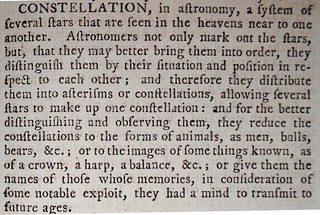
PREV ARTICLE
NEXT ARTICLE
FULL ISSUE
PREV FULL ISSUE
NOTES FROM E-SYLUM READERS: DECEMBER 20, 2015The U.S. Mint Refuses Greenbacks
The post on Greenbacks, Gold, and American Capitalism reminded me of a problem A M Smith encountered during the period mentioned. Reading the March, 1880 issue of Smith's Coin and Collectors Illustrated Guide. Smith tells of going to the mint in Philadelphia in late 1879, to purchase 1879 Proof Sets, which had just gone on sale. He tried to make payment in Greenbacks, which the mint refused. Smith was miffed! He said, "Our beloved president as said, Greenbacks are as good as gold." He was forced to pay with hard money. It seems like some things never change. I remember when I subscribed to current numismatic publications, almost every week there would be letters to the editor complaining about dealings with the mint. To read the earlier E-Sylum article, see:
On the Great Seal Star Constellation
Bill Nyberg submitted this note on the Great Seal star constellation. Thanks! -Editor
 
Some people have interpreted the intent of the Great Seal star constellation as a random grouping of stars, usually in reference to Charles Thomson's proposed drawing of the Great Seal, which was considerably modified in the final version. The eighteenth-century definition of a constellation describes "a system of several stars" which I have imaged from my set of Dobson's Encylopædia. With this definition, the final arrangement of the stars on the original Great Seal die is correct, and not in error as some have described it. Robert Scot used six-pointed stars in his designs, which have two opposing points in a linear axis, allowing Scot to easily align them into a pattern. I have included an image of a Commissioner of Revenue counterstamp engraved by Robert Scot, similar to one pictured in my book Robert Scot: Engraving Liberty. This is exactly the same hexagram pattern that is on the original Great Seal die, with individual six-pointed stars rotated in a vertical orientation, and arranged into a single six-pointed united star that "denotes a new State," which is quite an ingenious design of the thirteen stars. Both Thomson and Scot had reputations as being honest and trustworthy, and there little chance of them putting hidden meanings into something as important as the Great Seal. In my book I described that most of the Great Seal symbols had been previously used for various religious and cultural purposes, and they "suggest a borrowed symbolism, with a synthesis of all design elements adapted for a new interpretation of an exclusively American meaning for the Great Seal." Although there is no evidence of Haym Salomon being involved with the Great Seal, I did describe his financing activities during the revolution as being "strategically crucial to the American cause." To read the earlier E-Sylum article, see:
Wayne Homren, Editor The Numismatic Bibliomania Society is a non-profit organization promoting numismatic literature. See our web site at coinbooks.org. To submit items for publication in The E-Sylum, write to the Editor at this address: whomren@gmail.com To subscribe go to: https://my.binhost.com/lists/listinfo/esylum All Rights Reserved. NBS Home Page Contact the NBS webmaster 
|